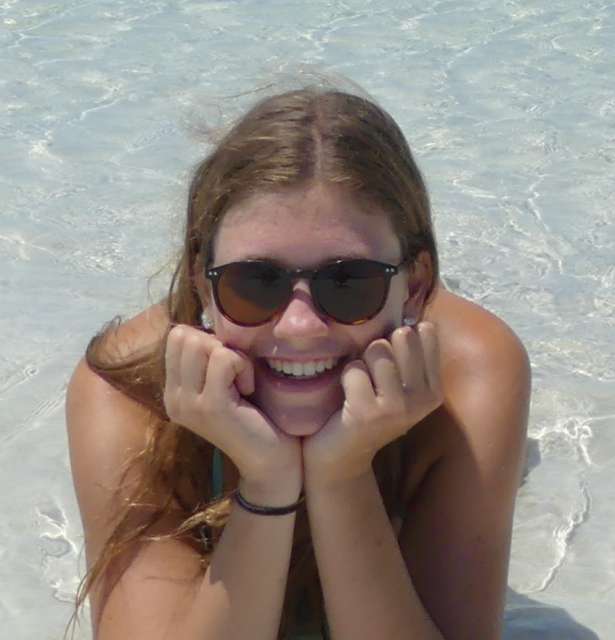
silvisabenteuer
vakantio.de/silvisabenteuer
Kakadu Day 3: Ubirr, Cahills Crossing and Sandy Billabong
प्रकाशित भइल बा: 11.09.2016
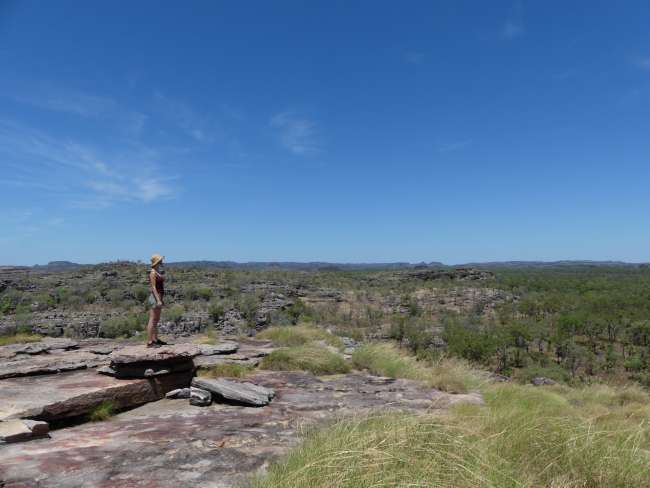
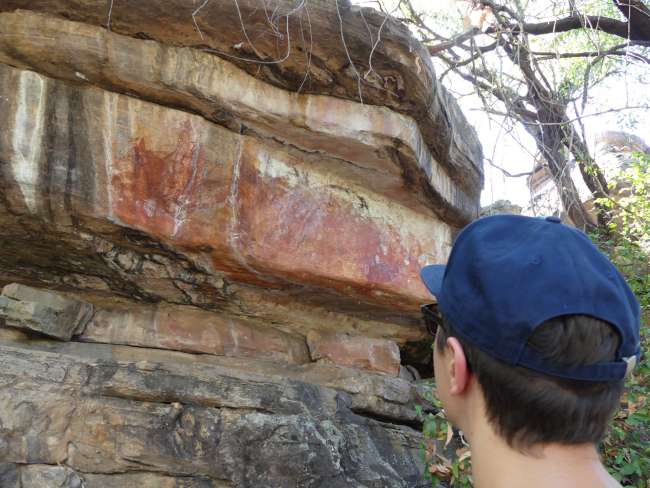
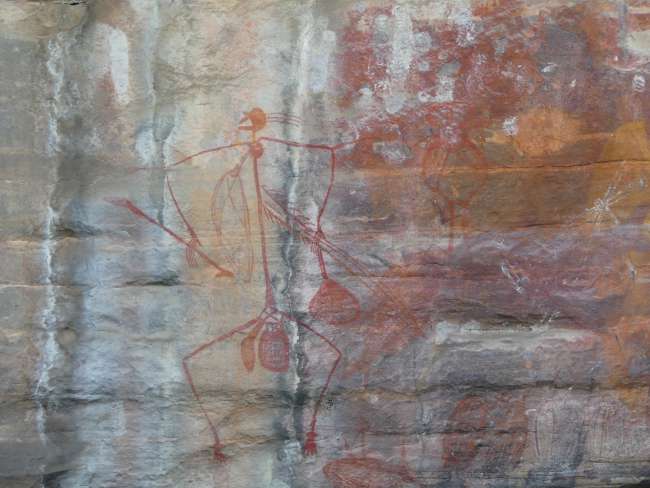
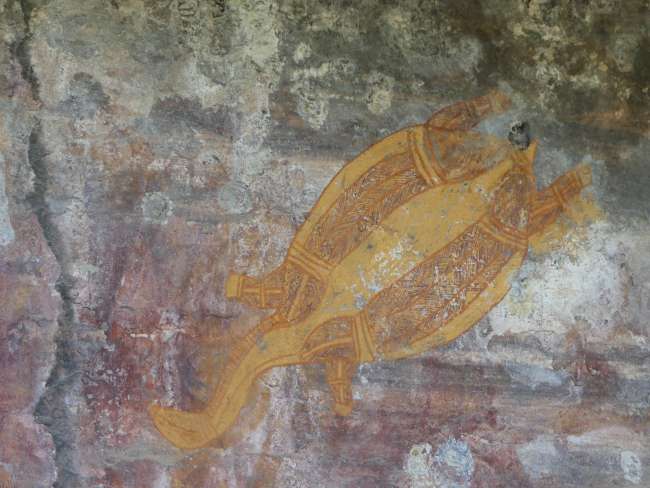
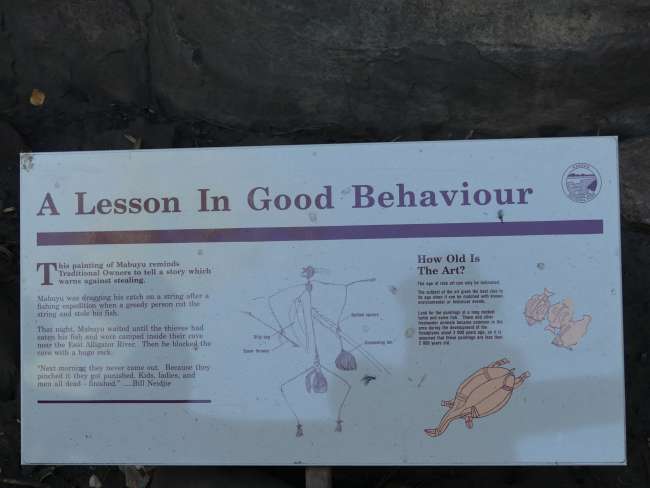
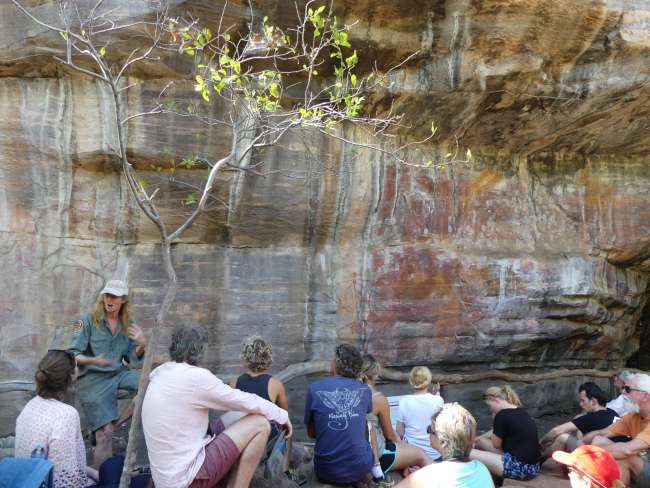
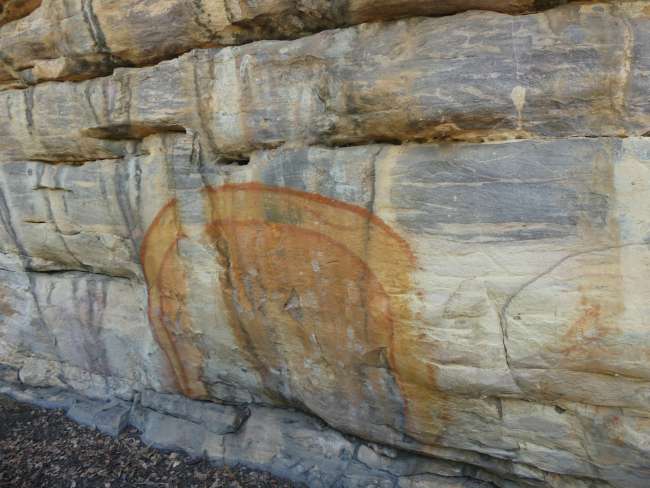
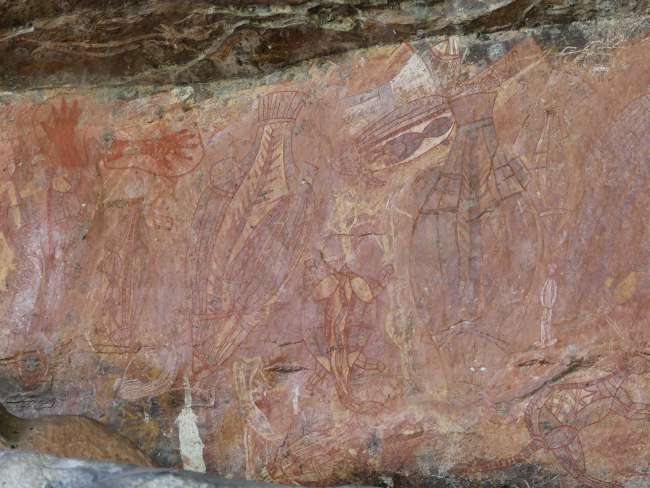
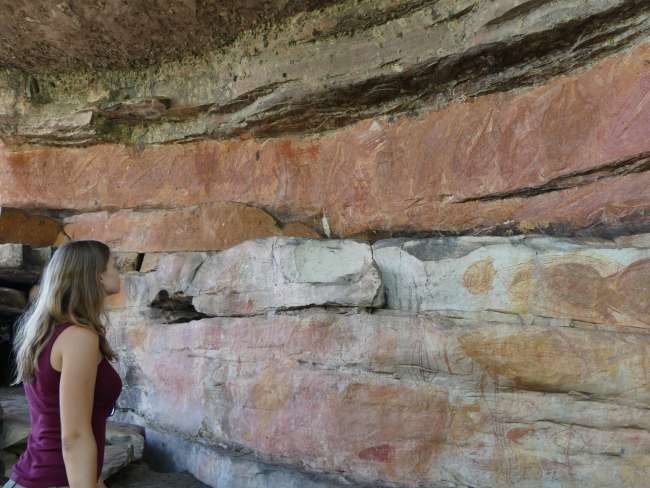
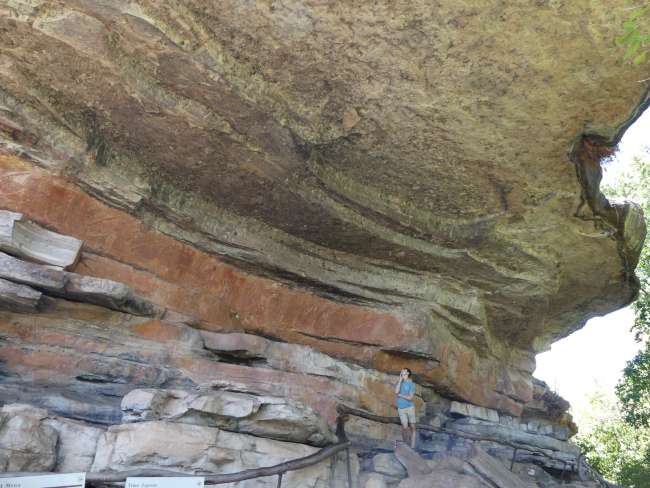
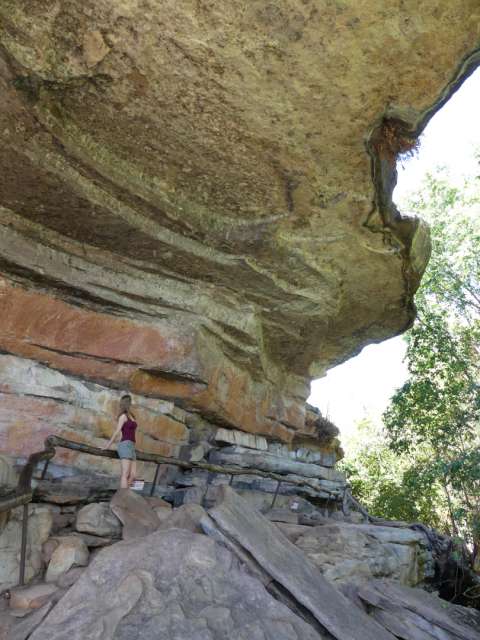
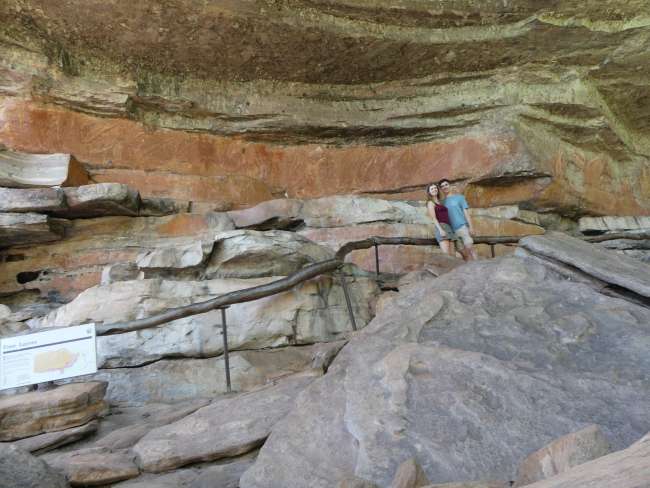
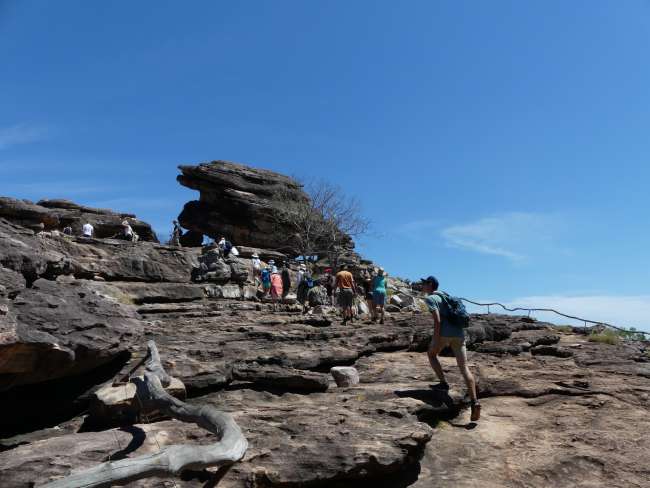
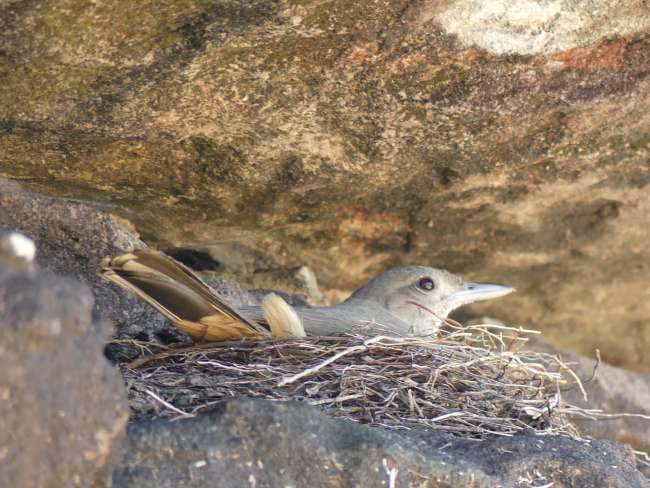
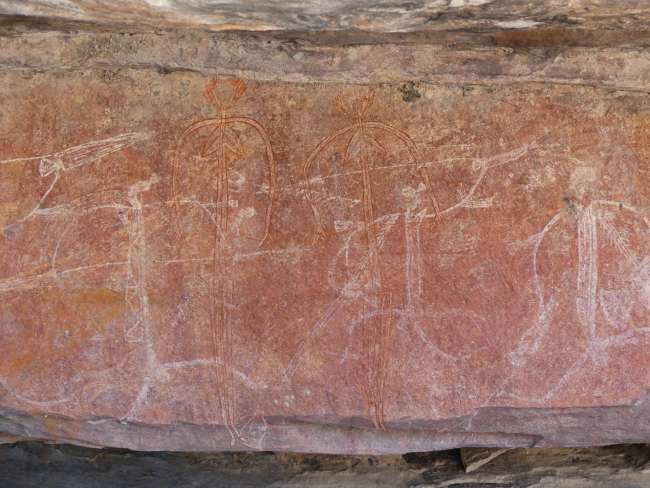

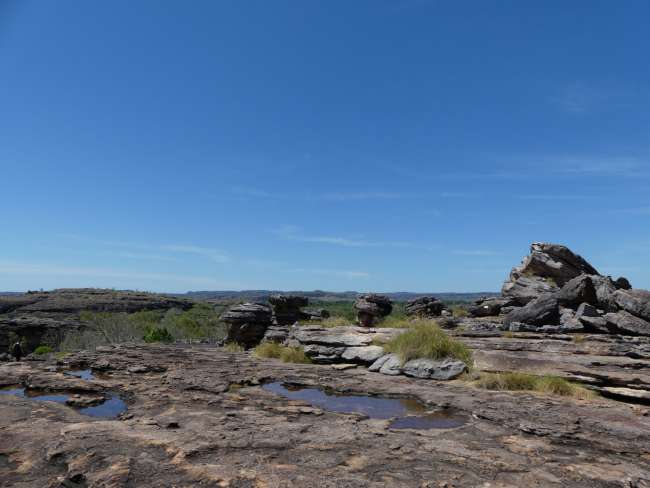
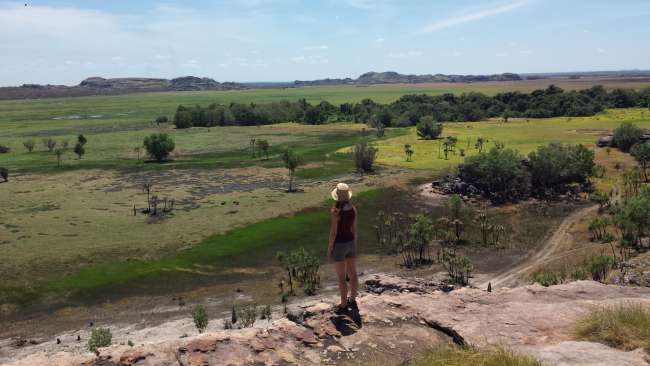
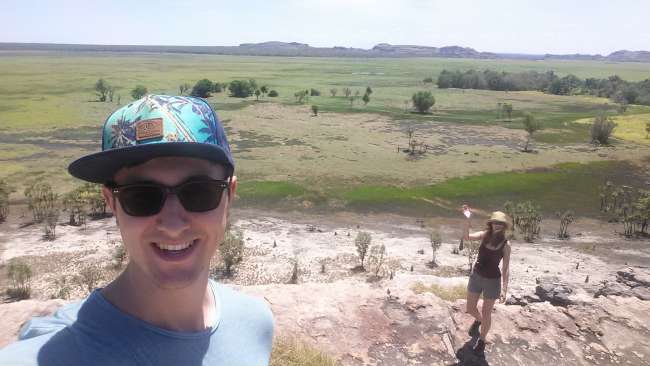
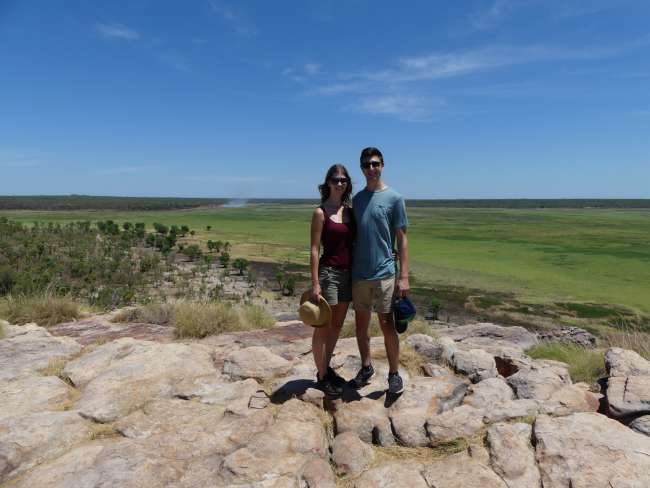
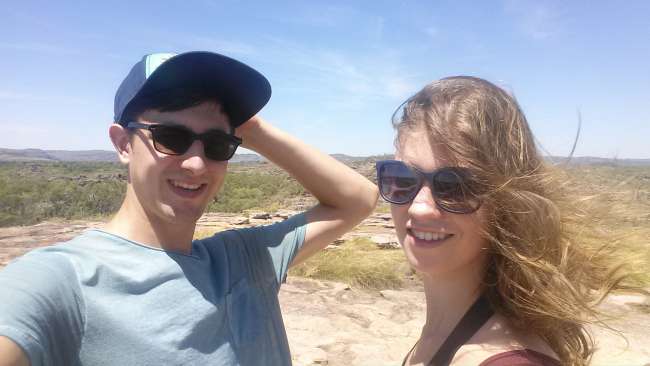
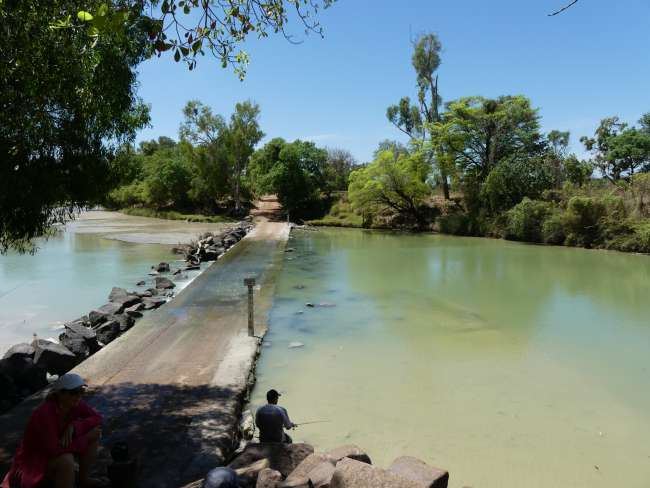
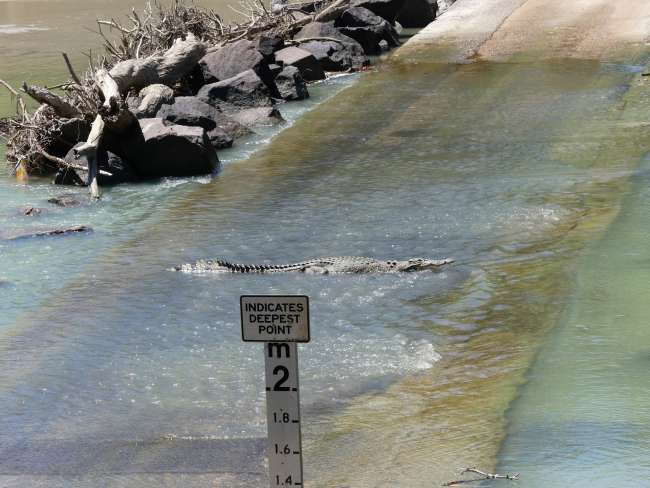
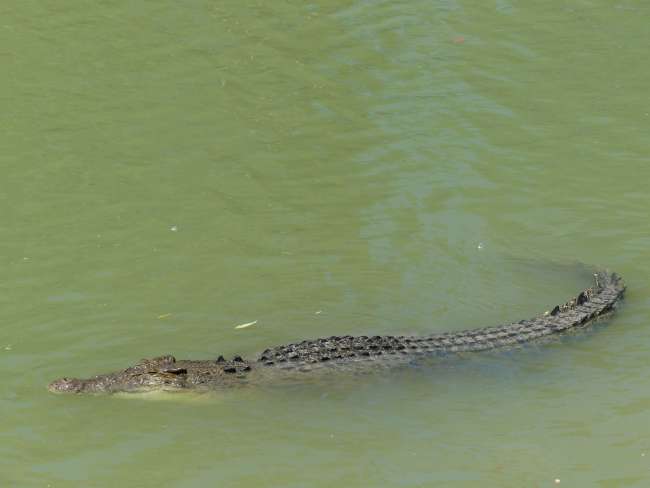
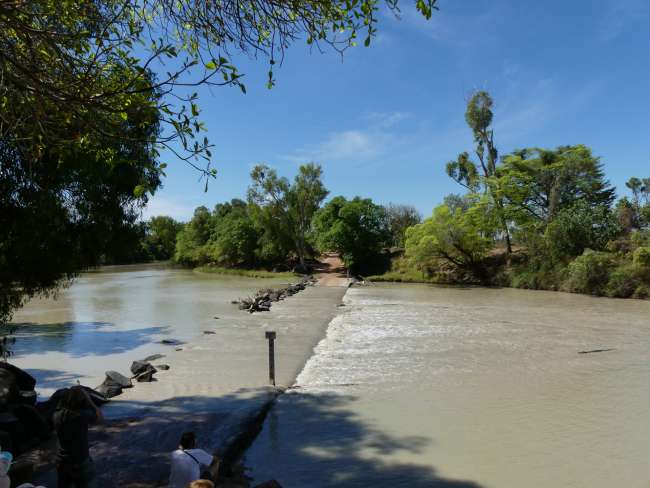
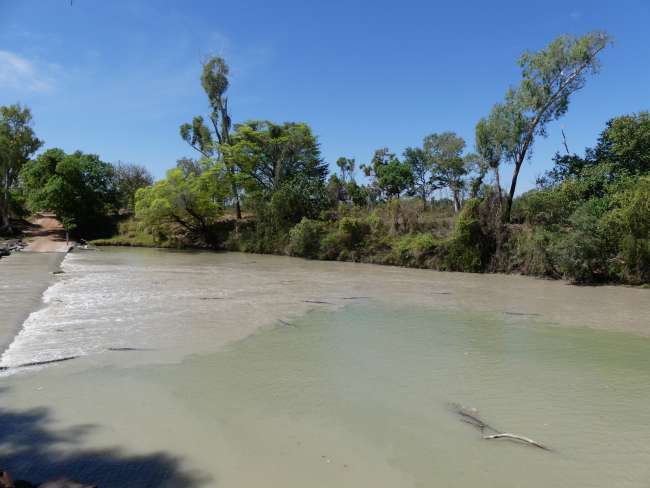
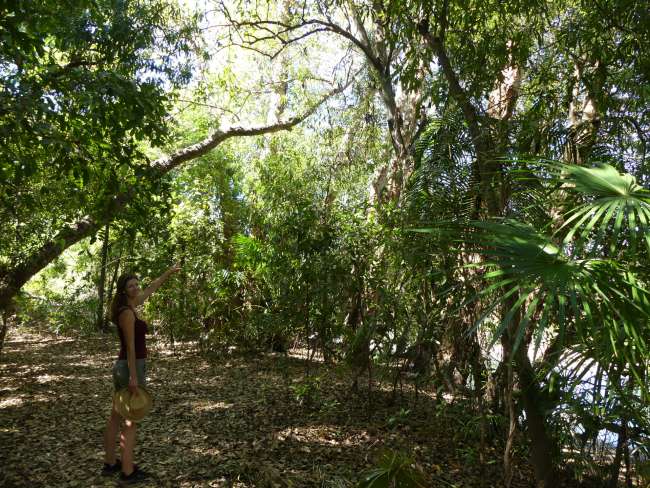
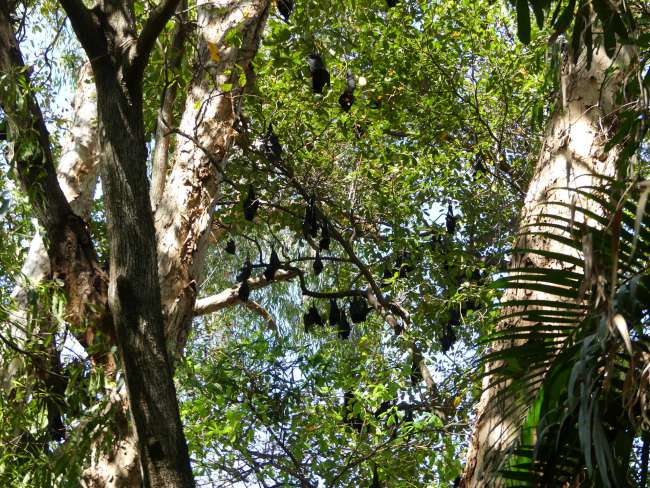
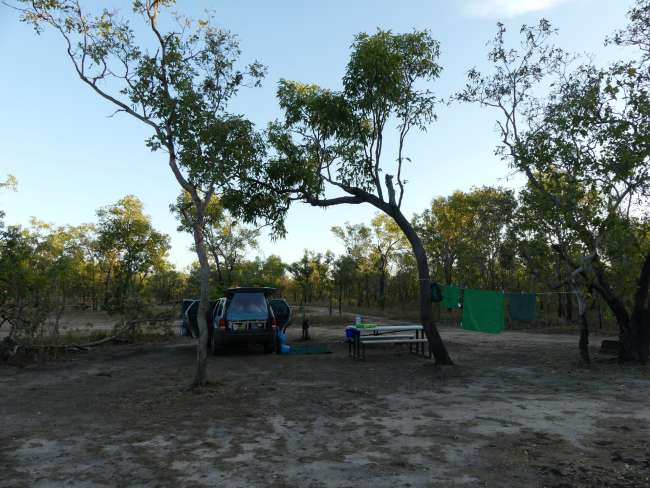
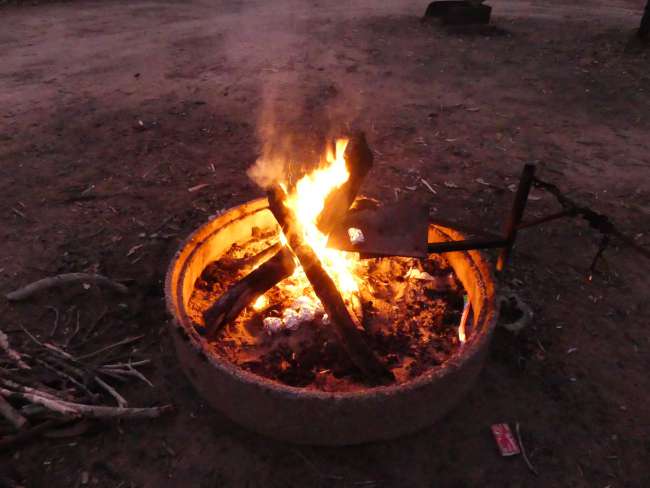
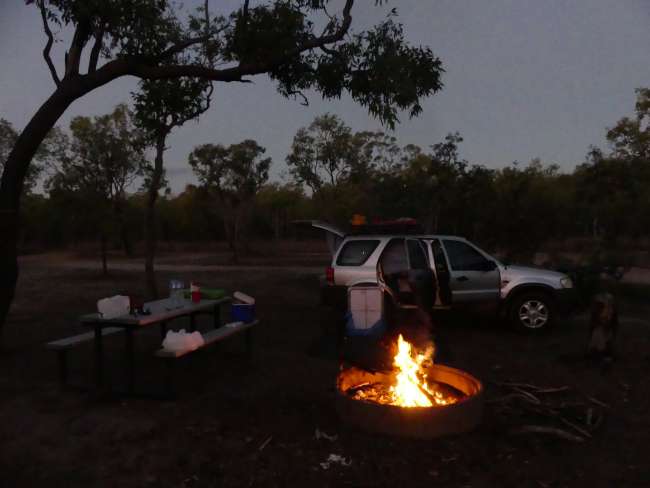
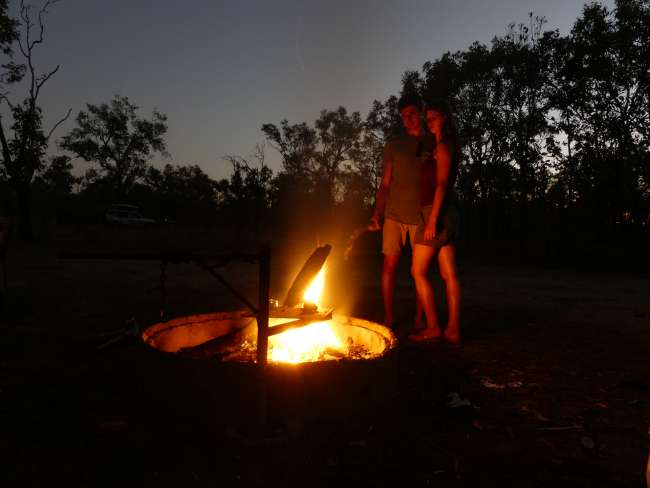
न्यूजलेटर के सब्सक्राइब करीं
On our third day in Kakadu National Park, we got up early again. We wanted to attend one of those talks again because we enjoyed it so much the day before, and this time we had to be at Ubirr at 9:30. Ubirr is a rock and the surrounding region known for its rock art. Unfortunately, we thought the tour was at 9, and this time we even arrived at 8:50, so we had to wait. But that's okay.
The tour started promptly at 9:30. This time, it was a woman guiding us. She first told us about two men who were considered the elders of the local Aboriginals and were the only ones who could still speak their language. Both have passed away, but they wanted visitors to see the unique sites and artworks and fought for it. They are grateful when people try to understand their culture. Our guide, Annie, personally knew one of them, so her stories were quite emotional.
Our next stops on the tour were different rock art sites, and Annie always explained what they were about. Without her help, it would have been difficult at times to recognize things because there are so many layers of artwork, and it's all very old, of course. She also told us the stories that belong to each artwork and are told to the children. Most of them are quite brutal, but they served their purpose. Here's an example of the Rainbow Serpent, which is believed to be the origin of all life and settled near the South Alligator River after the creation phase:
A little child received a sweet lily root from its mother and wanted more. But the mother couldn't find any, so the child cried. The child cried all night, and eventually, someone gave it a lily root, but it was bitter. After that, the child cried even more. The crying woke up the Rainbow Serpent, which found the child and its family, slithered into their camp, crushed the people, and ate them all. The end.
Great story, isn't it? It was meant to prevent children from shouting loudly in certain places because it could awaken the Rainbow Serpent. In practice, it was about not scaring away the hunting animals. The story also wants to say that everyone is responsible for the well-being of a child, and all members of the clan must try to calm it down and give it what it needs. That's why the serpent ate everyone, not just the mother or the child.
We also went to the Main Gallery. It's a pretty big rock that provides a lot of shade, so it's a pleasant place to live. In the Main Gallery, there are many paintings of fish and turtles, which are the main food of the Aboriginal people. They drew the animals there when they caught a particularly large specimen and were proud of it. Some paintings can still be recognized, but there are hundreds of layers of paint, and much of it is very blurred. Because of the animal paintings, the rock is also called "the menu." Further up on the same rock, there are signs of paintings that are very old. Nobody knows exactly how the drawings got there because they are about 10 meters above the ground on an overhang of the rock. And 20,000 years ago, it probably wasn't easy to climb up there.
After the Main Gallery, we headed towards the Lookout. There was another rock with the last story, and then the tour was over. It lasted until 12:15, almost 3 hours! But it was really not boring. And Annie said we were such an attentive and responsive audience that she sometimes got a little carried away. That was great for us.
Then we went further up the hill to the Lookout, and it was truly a highlight up there! A 360° view of meadows, forests, and rocks. So beautiful to look at. And so surreal when you stand up there. You can see so far! We even saw a bushfire from up there. And how the grass was moving in the wind. You could probably sit there for 5 hours and always discover something new. Unfortunately, there was no shade up there, so it got hot quickly. Besides, we still wanted to see the crocodiles at Cahills Crossing, so we started our way back.
Cahills Crossing is not far from Ubirr and refers to the place where a road crosses the East Alligator River. This river separates Kakadu National Park from Arnhem Land. Arnhem Land is the land of the Aboriginals, and you need permission to go there. The special thing about this section of the river is that there is a flood, and with this flood, the crocodiles come searching for food. The road in the river forms a small "waterfall" or rapids, in front of which the crocodiles position themselves, open their mouths, and wait for the fish to swim in by themselves. Quite a funny idea, actually :D The flood comes at a slightly different time every day. It was around 2 o'clock in the afternoon for us. It was really fascinating because we arrived around 1:15, and we could watch the water rise, the road getting more flooded, and especially more and more crocodiles coming. At the beginning, there were only 2 or 3, then 8, then 12, and in the end, we counted 27! Really cool. But after seeing crocodiles up close the day before, it wasn't necessarily the animals themselves that were fascinating, but rather the sheer number of them.
There is an observation platform for visitors at this section of the river, so it is not dangerous to watch the crocodiles. But there are some fishermen who also want to take advantage of the flood and the fish that come with it, and they stand by the water and fish. That's quite dangerous. Especially because we also saw crocodiles crossing the road just like that. The crocodiles we saw there are called salties. That means crocodiles that live in saltwater but also in freshwater when they swim up the rivers. I don't know if I've mentioned it before, but those are the dangerous and aggressive kind. Then there are still the freshwater crocodiles in Australia that live in freshwater. They are smaller and not aggressive. They only bite if they are disturbed. But they can still cause serious injuries, of course, if you bathe somewhere and they feel disturbed by it. However, it is the saltwater crocodiles for which warning signs are placed everywhere in the national park and for which you can hardly swim anywhere anymore. People have even been killed by crocodiles in the park. Actually, it's good that there are crocodiles again because just 30 years ago, the animals were almost extinct because they were hunted for their skin. But back then, you could still go swimming everywhere in Kakadu. So, everything kind of has two sides.
We had our lunch at Cahills Crossing at the picnic tables. It consisted of the noodles from the day before. We just put them on the dashboard a bit, and because it's so incredibly hot and the sun shines directly on them there, they were actually warm :D And they won't spoil without refrigeration overnight, so from now on, we want to have our lunch from the day before for lunch the next day more often. Before, we always made sandwiches for lunch (prepared them in the morning for lunch), but since we can't cool constantly, it's difficult with things like cheese and sausage. Honey, Nutella, and peanut butter are good for breakfast, but for lunch, you still want something savory. Of course, I couldn't do without cheese, so we bought a piece. But after the first night, it was already somewhat melted, even though we had our car plug-in cooler on during the day. It works, but it doesn't cool without being plugged in, and within 1 hour, it gets so hot in the car that all the cooling effect from before is gone. Kind of inconvenient. We'll have to come up with something.
After watching the crocs, we drove towards Jabiru. It's basically the capital of Kakadu National Park, where the rangers live and where there's a supermarket, an ATM, a hairdresser, etc. But you can't really call the collection of houses a city :D Out of interest, we took a look at the supermarket, and water was really expensive there, but the other things were only slightly more expensive than in Darwin. I imagined it worse. Especially because the petrol in the park was already very expensive. At the Cooinda petrol station, we paid 1.48, while in Darwin we paid 1.12. But the price is still okay considering that petrol costs over 2.00 in the outback :D
The town wasn't particularly interesting, so we drove on right away. We had quite a distance ahead of us because we wanted to stay at Sandy Billabong Campground overnight. And the last part there leads over a 4WD track. We wanted to take advantage of having a car that can drive on it at least once :D I think we arrived around 4 or half past 4. And there was no one there. We were the only ones. Later, 2 more cars arrived, but that was it. Pretty cool! It was just a basic campground; the only thing there was a toilet block with compost toilets. And fire pits. But that only cost 6 AUD per person. And we could really make use of the fire pit this time because there was still so much firewood left behind by the previous campers. And we immediately used the fire to make oven potatoes. Just in the fire instead of the oven :D We had sour cream with herbs and canned salmon with it. That was really a really good meal!! For the next day's lunch, we wanted to stock up, so we put more potatoes in the fire. Unfortunately, we made the mistake of leaving the potatoes outside overnight because we thought they were packed and there was still the ember. When we got up the next day, there was NOTHING left of the potatoes. All 6 pieces eaten by those stupid crows!! That really annoyed us, but we learned from it...
The evening there at the campground was really nice, and we could see soo many stars. Plus, the air was so fresh, and we could hear all the ducks from the billabong nearby. I have to say that it's really fun to sleep in the car, stick your head out into the night air a bit, and listen to the crickets :)
न्यूजलेटर के सब्सक्राइब करीं
जबाब (2)
Frank
Grillen im Kopf, hahaSilvia
:P